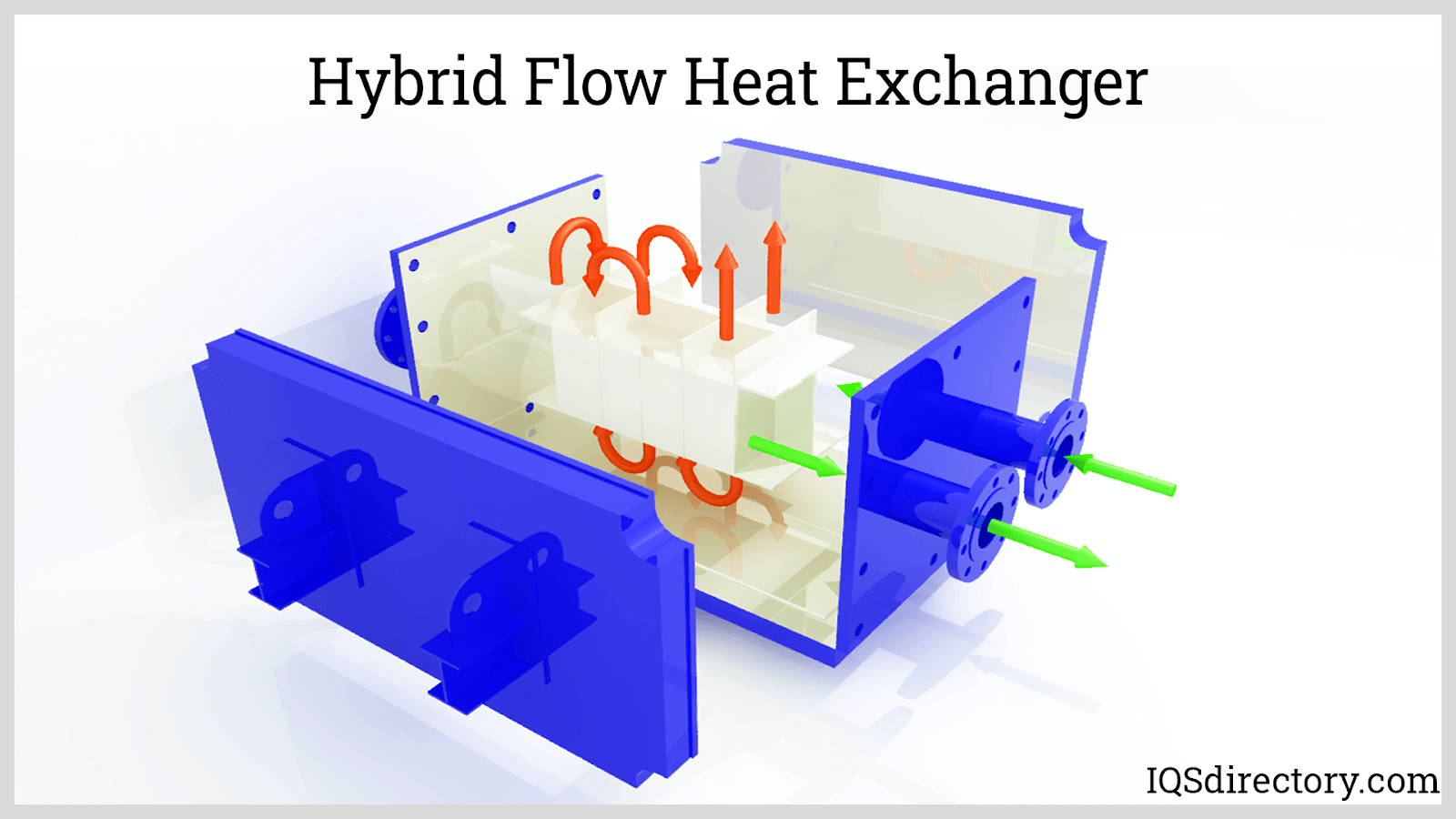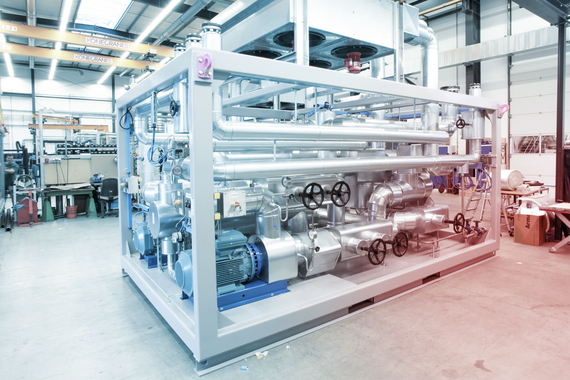Why Are DVS Heat Transfer Systems Ideal for Aerospace Thermal Solutions?
Wiki Article
Exploring the Conveniences and Applications of Heat Transfer Systems in Modern Sector
Heat transfer systems play a vital role in modern-day market. They encompass different mechanisms such as radiation, convection, and conduction, each contributing to efficient thermal monitoring. Industries like manufacturing and aerospace advantage considerably from these systems. As developments proceed, the combination of innovative products and innovations assures to improve power effectiveness. This advancement increases vital concerns concerning the future ramifications for sustainability and functional expenses throughout multiple fields. What lies in advance in this ongoing improvement?Understanding Heat Transfer Concepts
Heat transfer concepts are basic to the operation of different commercial systems. These principles incorporate the systems of radiation, conduction, and convection, each playing a vital function in managing thermal power. Understanding transmission involves examining how Heat moves via solid products, while convection refer to Heat transfer in liquids, driven by fluid movement. Radiation, distinctive from the other 2, involves power transfer via electromagnetic waves. The effectiveness of Heat transfer influences system performance, energy usage, and total productivity. Efficient thermal administration is essential in processes such as heating, cooling, and Heat recuperation. By mastering these principles, markets can enhance their procedures, minimize power prices, and boost tools long life, therefore adding to an extra efficient and sustainable industrial landscape.Key Types of Heat Transfer Systems
While various industries make use of Heat transfer systems for diverse applications, a number of crucial types stand apart due to their specific features and performances. One of the most typical types include transmission, convection, and radiation systems. Conduction systems transfer Heat via direct contact in between products, making them effective in solid-state applications. Convection systems, on the other hand, make use of fluid movement to move Heat, suitable for home heating or cooling down liquids and gases. Radiation systems operate without a medium, relying upon electromagnetic waves to transfer Heat, ideal for high-temperature environments. Each kind serves distinct purposes, enabling industries to customize their Heat transfer services based upon operational needs, power efficiency, and cost-effectiveness. Recognizing these systems is essential for enhancing performance in numerous industrial setups.Industrial Applications of Heat Transfer Technologies
The application of Heat transfer technologies in market plays a vital duty in improving power effectiveness and maximizing processes. DVS Heat Transfer Systems. By applying sophisticated Heat exchange systems, companies can considerably reduce their ecological influence while enhancing total efficiency. This assimilation not only cultivates sustainability but likewise straightens with contemporary governing and consumer demands for greener techniquesEnergy Performance Improvements
As industries significantly focus on sustainability, energy effectiveness improvements in Heat transfer modern technologies have ended up being important for lowering functional costs and ecological influence. Enhanced Heat exchangers, for instance, utilize innovative materials and designs to make the most of thermal efficiency while reducing energy intake. Integrating variable rate drives in pumping systems allows for much better control of liquid circulation, leading to substantial energy savings. The application of clever sensors and automation gives real-time monitoring, enabling adjustments that maximize energy use. Furthermore, waste Heat recuperation systems capture excess thermal energy, converting it right into usable power. These developments not only enhance energy efficiency but additionally contribute to a more sustainable commercial landscape by lowering greenhouse gas discharges and supporting compliance with environmental laws.Refine Optimization Techniques
Refine optimization methods are vital in improving the efficiency and effectiveness of Heat transfer modern technologies in commercial applications. These techniques involve refining procedures to maximize Heat transfer efficiency while lessening energy consumption and functional expenses. Methods such as computational liquid characteristics (CFD) modeling enable designers to replicate and evaluate Heat transfer scenarios, recognizing locations for improvement. In addition, real-time tracking systems can provide useful data on temperature level gradients and circulation rates, enabling modifications that optimize efficiency. Executing innovative control techniques, such as anticipating analytics, can improve system responsiveness to differing operational needs. By using these optimization methods, sectors can achieve better thermal efficiency, lowered downtime, and improved item quality, inevitably resulting in raised competitiveness in the industry.
Environmental Influence Reduction
While commercial Heat transfer technologies are essential for functional performance, their application also provides possibilities for significant ecological effect decrease. By improving energy performance, these systems minimize fuel usage, bring about lower greenhouse gas discharges. Advanced Heat exchangers can recuperate waste Heat, redirecting it to preheat inbound liquids, therefore reducing energy requirements. Additionally, the integration of Heat transfer innovations in sustainable power systems, such as solar thermal and geothermal applications, sustains the change to lasting techniques. Industries that use these technologies also take advantage of decreased operational expenses and improved regulative conformity. Generally, the calculated application of Heat transfer systems not just boosts performance yet also fosters an extra lasting commercial landscape, adding to global ecological objectives.Benefits of Effective Heat Transfer Systems
Efficient Heat transfer systems provide significant benefits in modern-day market, mostly through enhanced power effectiveness and expense reduction. By maximizing thermal monitoring, these systems lessen energy waste, leading to reduced functional expenses (DVS Heat Transfer Systems). Services can achieve better sustainability and enhanced success.
Power Performance Improvements
As sectors increasingly focus on sustainability and cost-effectiveness, power effectiveness improvements in Heat transfer systems have become an essential emphasis. Boosted performance in these systems leads to reduced energy consumption, enabling centers to run even more sustainably. By maximizing Heat transfer techniques, markets can lessen waste Heat and achieve better thermal management, greatly lowering their ecological influence. Breakthroughs in modern technologies such as Heat exchangers and insulation materials add to improved efficiency and integrity. Moreover, carrying out energy-efficient Heat transfer solutions not only sustains conformity with regulative standards yet additionally promotes a culture of development within organizations. Eventually, these improvements are essential in straightening industrial operations with international energy preservation objectives, leading the way for an extra sustainable future in manufacturing and processing sectors.Price Decrease Opportunities
By enhancing Heat transfer systems, industries can reveal substantial expense reduction possibilities that improve their profits. Reliable Heat transfer reduces power consumption, causing reduced utility costs and lessening operational expenditures. In addition, improved system performance reduces the need for maintenance and repair work, additionally saving prices gradually. Improved Heat transfer can also extend devices lifespan, permitting business to delay capital expenses on replacements. In addition, waste Heat healing systems can transform excess Heat into useful energy, better driving down costs. These systems not only enhance procedures but likewise add to sustainability efforts, positioning business positively in an increasingly eco-conscious market. On the whole, the financial benefits of reliable Heat transfer systems are considerable and crucial for competitive advantage.Advancements in Heat Transfer Solutions
Just how can modern-day sector enhance its operations through innovative Heat transfer solutions? By adopting advanced materials and technologies, industries can significantly improve thermal efficiency and performance. Innovations such as nanofluids, which enhance Heat transfer capacities past standard liquids, and stage modification materials that store and release thermal energy, are obtaining grip. Furthermore, the assimilation of smart sensors and IoT gadgets permits for real-time surveillance and optimization of Heat transfer processes, decreasing waste and enhancing system responsiveness. Additive production methods enable the production of even more complicated Heat exchangers that optimize surface area while minimizing product usage. Jointly, these advancements drive operational performance and produce competitive benefits in various sectors, consisting of energy, aerospace, and production.The Role of Heat Transfer in Sustainability Efforts
While the press for sustainability remains to improve industries, the duty of Heat transfer innovations becomes progressively important in attaining environmental objectives. Effective Heat transfer systems promote energy performance by optimizing thermal monitoring in various processes, substantially decreasing power intake and greenhouse gas discharges. For circumstances, advanced Heat exchangers are made use of in industrial applications to recover waste Heat, thus decreasing energy waste. Furthermore, innovations such as phase modification products enhance thermal storage, adding to renewable resource combination. The adoption of sustainable fluids in Heat transfer systems can minimize ecological impact. By prioritizing effective Heat transfer, industries not only boost operational efficiency yet likewise align with worldwide sustainability campaigns, fostering a cleaner, much more lasting future.Regularly Asked Questions
How Do Heat Transfer Systems Impact Energy Expenses in Production?
Heat transfer systems considerably influence energy expenses in manufacturing by improving effectiveness, lowering waste, and maximizing thermal monitoring. These renovations bring about decrease functional expenditures, inevitably profiting general efficiency and success in industrial operations.What Maintenance Is Needed for Heat Transfer Solutions?
Maintenance for Heat transfer systems includes normal examinations, cleansing of elements, inspecting fluid degrees and problems, replacing worn parts, and ensuring correct insulation. These activities improve effectiveness, prolong life expectancy, and avoid expensive break downs in procedure.Exist Safety Concerns With Heat Transfer Solutions?
Safety and security interest in Heat transfer systems include possible leakages, pressure accumulation, and thermal risks. Correct style, regular maintenance, and adherence to safety procedures are vital to minimize these dangers and assure safe procedure in industrial atmospheres.
How Can I Select the Right Heat Transfer System for My Business?
Selecting the appropriate Heat transfer system includes reviewing elements such as effectiveness, application needs, budget restrictions, and safety and security standards. A complete analysis of these elements will aid assure perfect efficiency and integrity in business operations.What Are Typical Failings in Heat Transfer Equipments and Their Causes?

Comprehending transmission includes analyzing exactly how Heat moves via solid products, while convection pertains to Heat transfer in liquids, driven by liquid movement. By optimizing Heat transfer approaches, markets can reduce waste Heat and achieve much DVS Heat Transfer Systems better thermal management, substantially reducing their ecological effect. Waste Heat recovery systems can change excess Heat into useful energy, better driving down costs. Progressed Heat exchangers are used in commercial applications to reclaim waste Heat, therefore reducing power waste. Common failings in Heat transfer systems include leakages, corrosion, and inefficient Heat exchange.
Report this wiki page